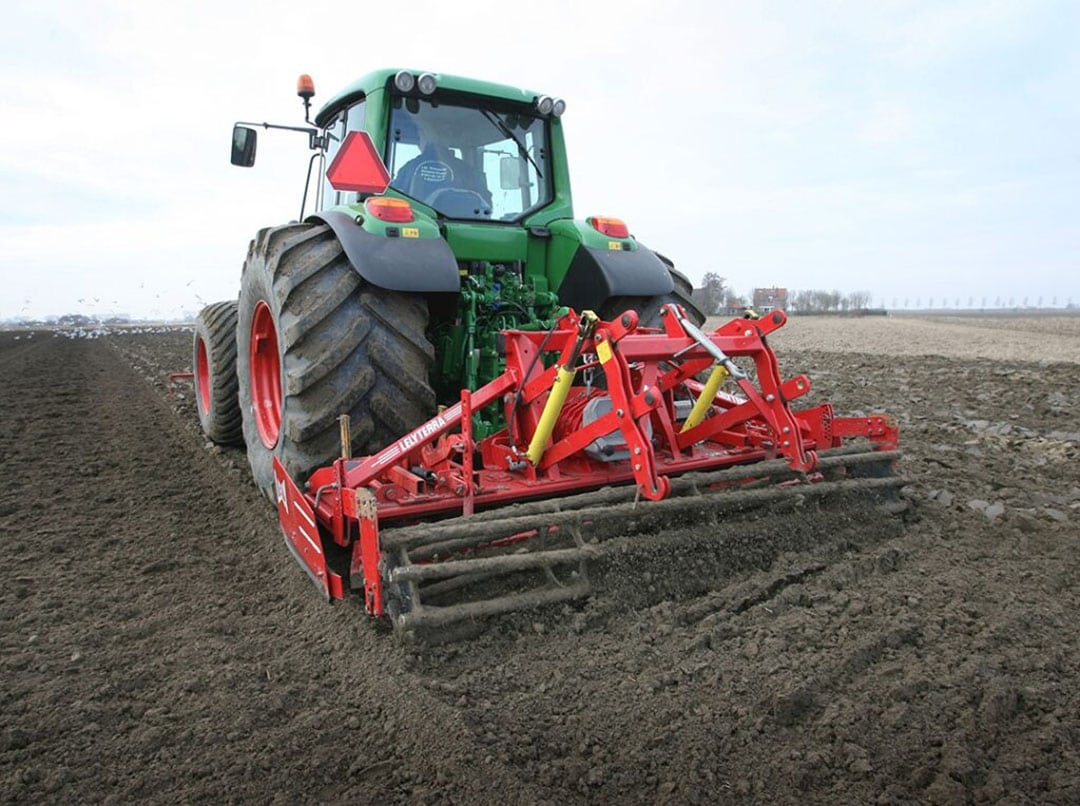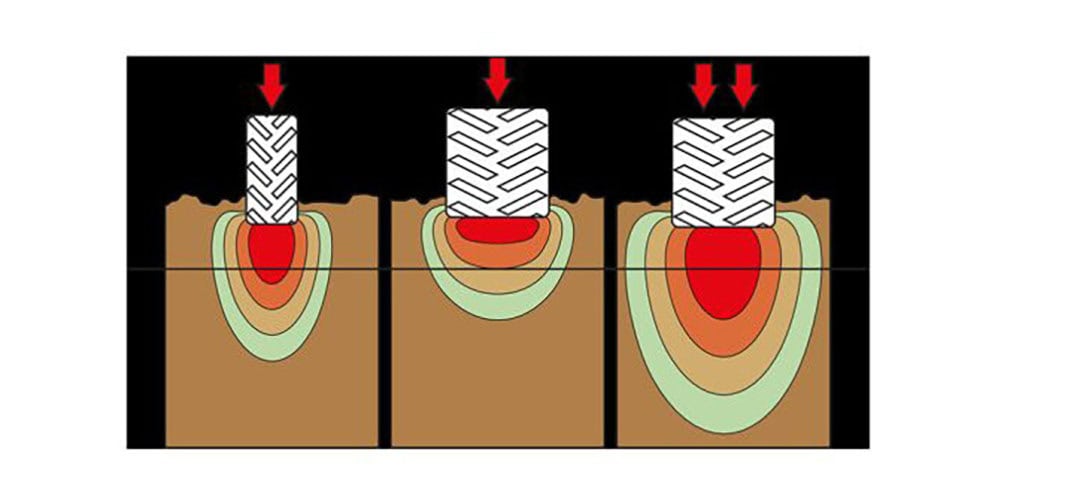Why do wide tires cause deeper soil compaction? Science explains

The less pressure per square centimeter, the less compaction. This argues for wider tires. But it is also a fact that a broader tire also pushes its ground pressure deeper into the soil. This is why.
You often hear it: compaction from a tire penetrates deeper into the soil as the tire gets wider. A tall tale or a simple truth? It’s the truth, and it can be easily explained by the laws of soil mechanics. This can still be seen as theory, but over the years, measurements have been taken by various researchers in several countries that support this theory.

Recent research by Swiss scientist Roger Stirnimann from the Hochschule für Agrar-, Forst und Lebensmittelwissenschaft (HAFL) in Switzerland also confirms the 70-year-old explanation of why a wide tire compacts deeper.

Wheel load penetrates deeper into soil
Stirnimann conducted measurements on the impact of modern tires, including VF tires and various track systems. The type of tire surface that exerts pressure on the ground doesn’t matter to the soil. Whether it’s a concrete tile or a smooth rubber tire, what matters are the pressure per square centimeter and the size of the contact area. This is not breaking news because as far back as 1953, German professor W. Söhne demonstrated that a wide tire compacts the soil deeper than a narrow one. Söhne determined that at a depth of 20 centimeters, the soil pressure increases as the tire width increases, even if you select the ratio between tire and load so that the soil pressure at the surface, under the wheel, remains the same. Under a wide tire, the ground cannot move sideways, so the load propagates deeper into the ground.
Action = reaction
Soil consists of soil particles, air, and water. Compaction occurs as tractors and machinery press the air volume out of the ground through their tires. The once-porous soil turns into a solid mass. The susceptibility of soil to compaction depends on the soil type and moisture content. Especially clay soil is more prone to compaction when it is moist.


Duration and vibrations have a significant effect
In addition to pressure per square centimeter, the duration of the load is also important. The longer the pressure is exerted, the more the soil will compact. This is why compaction from tracks, compared to pneumatic tires, is greater than one might expect based on pressure per square centimeter alone. Vibrations also promote compaction. It’s a well-known phenomenon that when a heavy harvesting machine or track vehicle travels over the headland, the water in the ditch can ripple due to the vibrations apparently transmitted in the subsoil. In short, multiple factors come into play when it comes to whether and how deep compaction occurs. The main goal remains to prevent the applied pressure from exceeding the soil’s strength.



